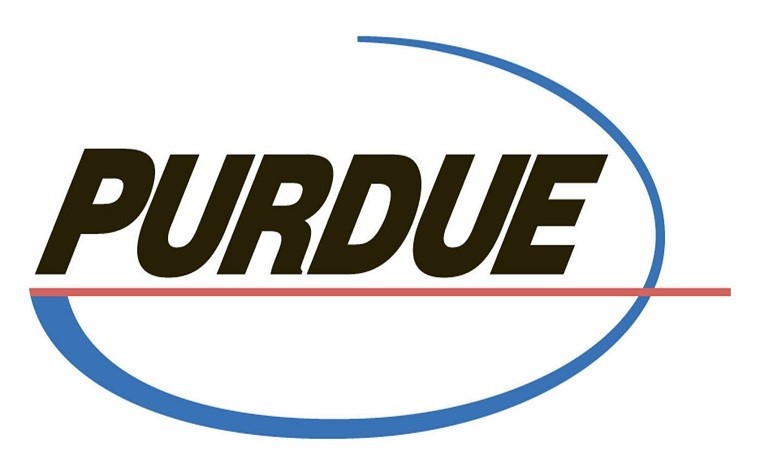Purdue Pharma L.P issued the following announcement on June 5.
Eisai Co., Ltd. (CEO: Haruo Naito, “Eisai”) and Purdue Pharma L.P. (President and CEO: Craig Landau, “Purdue Pharma”) today presented the results of two key Phase 1 clinical studies of their investigational sleep/wake regulation agent lemborexant at the 32nd Annual Meeting of the Associated Professional Sleep Societies (SLEEP 2018), June 2-6, Baltimore, MD. Lemborexant is currently being studied for the potential treatment of multiple sleep disorders. Positive topline results from these Phase 1 studies as well as a Phase 3 study (SUNRISE 1), which compared lemborexant to placebo in patients with a sleep disorder and included the first-ever head-to-head superiority comparison versus zolpidem extended release (zolpidem ER) as a secondary endpoint, were previously announced.
Phase 1 Study 108 – “Auditory Awakening Threshold to Evaluate Ability to Awaken After Administration of Lemborexant Versus Zolpidem”
(Poster # 097) met its primary endpoint resulting in a statistically significant difference in postural stability with both doses of lemborexant compared to zolpidem ER in the middle of the night. The mean changes from baseline in body sway, a measure of postural stability, were -1.1 units for placebo, 5.8 units for lemborexant 5 mg, 8.1 units for lemborexant 10 mg, and 20.4 units for zolpidem ER 6.25 mg; (p<0.0001 vs. zolpidem ER for both lemborexant 5 mg and 10 mg).
Healthy volunteers 55 years and older (n=56) were administered treatments at bedtime, and body sway was assessed upon awakening participants after approximately four hours in bed. A 7 unit increase from baseline was defined as a clinically meaningful increase in body sway, as benchmarked to the effect of alcohol on the same measure of postural stability.1 Zolpidem ER increased body sway at a magnitude almost three times greater than the increase in body sway associated with a blood alcohol content (BAC 0.05 percent1) near the legal driving limit. Lemborexant 5 mg did not result in a clinically meaningful increase in body sway, while lemborexant 10 mg increased body sway to just above the clinically meaningful threshold.
The next morning, shortly after the end of eight hours in bed, unlike zolpidem ER, neither dose of lemborexant had statistically significant residual effects on this measure of postural stability as compared to placebo. The mean changes from baseline in body sway were -2.2 units for placebo, 0.4 units for lemborexant 5 mg, -0.4 units for lemborexant 10 mg, and 5.0 units for zolpidem ER 6.25 mg (p=NS [not significant] for both doses of lemborexant vs. placebo, p=0.01 for zolpidem ER vs. placebo).
“Postural instability is thought to be the single best predictor of falls.2 Significant unmet need exists for a treatment that can help people awaken in the night or the next morning without this type of impairment,” said Lynn Kramer, MD, Chief Clinical Officer and Chief Medical Officer, Neurology Business Group, Eisai. “If approved, lemborexant, our investigational sleep/wake regulation agent, may have the potential to reduce the risk of postural instability.”
In this Phase 1 study, there were no serious adverse events (AE). Headache was the only AE observed in two or more subjects taking lemborexant. The only AE that occurred in more than one subject in any treatment period was nasopharyngitis, which occurred in the placebo treatment period. Rates of treatmentemergent AEs were low and of mild or moderate severity. Two subjects discontinued due to an AE. There were no AEs of somnolence.
A secondary study objective was to evaluate the effects of lemborexant 5 mg and 10 mg on the auditory awakening threshold (AAT), a measure of the ability to be awakened by an external stimulus at approximately four hours post-dose, compared to zolpidem ER and placebo. A clinically meaningful increase in AAT was pre-specified as an 8-decibel (dB) change from baseline.
Neither dose of lemborexant had a statistically significant difference relative to placebo or zolpidem ER on the ability to awaken to an external stimulus. The mean treatment differences compared to placebo were 1.7 dB for lemborexant 5 mg, -0.9 dB for lemborexant 10 mg, and 7.2 dB for zolpidem ER 6.25 mg (p=NS). Of the subjects who completed all four treatments, eight subjects taking zolpidem ER did not awaken to the loudest tone of 105 dB, compared with four subjects in each of the other treatment groups (placebo, n=42; lemborexant 5 mg, n=47; lemborexant 10 mg, n=50; and zolpidem ER, n=50). Varying n’s were due to either the subject already being awake thus no AAT was administered, or a technical issue with the AAT equipment.
“By acting on the orexin neurotransmitter system, which regulates wakefulness, lemborexant appears to affect sleep and wake by dampening excessive wakefulness and does not appear to impede the ability to awaken to external stimuli,” said Russell Rosenberg, PhD, D. ABSM, a Principal Investigator in lemborexant studies and former Chairman of the Board of the National Sleep Foundation. “As the largest study conducted to date evaluating postural stability and auditory awakening threshold in the middle of the night, these data about the effects of lemborexant on measures of balance and responsiveness to external stimuli are encouraging with respect to addressing current unmet needs in the treatment of sleep disorders.”
In addition, return to sleep latency was evaluated as an exploratory endpoint and both doses of lemborexant had faster return to sleep after being awakened in the middle of the night compared to placebo. The mean treatment differences compared to placebo were -22.5 minutes for lemborexant 5 mg, -28.7 minutes for lemborexant 10 mg, and -21.0 minutes for zolpidem ER (p<0.0001 for all treatment groups compared to placebo). Lemborexant 10 mg also facilitated the return to sleep faster than zolpidem ER 6.25 mg (p=0.02).
These results support findings from SUNRISE 1, a recently completed Phase 3 study of lemborexant (5 mg and 10 mg) versus placebo, including a superiority comparison to zolpidem ER as a secondary endpoint. The study met endpoints of time to sleep onset and sleep maintenance as measured by polysomnography, as well as body sway upon awakening, when compared to placebo and zolpidem ER. In this study, lemborexant had rates of discontinuation due to AEs comparable to placebo, with the most common AEs in the lemborexant arms being headache and somnolence.
Phase 1 Study 106 – “Results From an On-Road Driving Performance Study in Non-elderly and Elderly Healthy Subjects with Dual Orexin Receptor Antagonist Lemborexant” (Poster # 099) evaluated next morning effects of lemborexant compared with placebo, with zopiclone included as a positive control, by measuring adult and elderly participants’ (n=48) driving performance via an on-road driving test. The primary endpoint was to evaluate difference from placebo of standard deviation of lateral position (SDLP), an index of weaving, during an on-road driving test on the mornings following the first and last dose of drug in each treatment period. Drug-placebo differences in SDLP >2.4 cm are considered to reflect clinically meaningful driving impairment, as benchmarked against a BAC of 0.05 percent.
Lemborexant 2.5, 5 and 10 mg showed no statistically significant impairment of driving performance, as measured by mean changes in SDLP, after either single (Day 2) or multiple (Day 9) dose administration compared to placebo, meeting the study’s primary endpoint. In contrast, zopiclone 7.5 mg significantly increased mean SDLP as compared to placebo. The mean drug-placebo changes in SDLP (in centimeters) compared to placebo for Day 2 were 0.02 cm for lemborexant 2.5 mg, 0.23 cm for lemborexant 5 mg, 0.73 cm for lemborexant 10 mg, and 2.04 cm for zopiclone 7.5 mg. For Day 9, the mean drug-placebo changes in SDLP were 0.48 cm for lemborexant 2.5 mg, 0.36 cm for lemborexant 5 mg, 0.74 cm for lemborexant 10 mg, and 1.88 cm for zopiclone 7.5 mg. The upper bound of the 95 percent confidence intervals for the mean changes in SDLP were all below 2.4 cm for all three doses of lemborexant on Days 2 and 9, indicating that there was not clinically meaningful driving impairment. The upper bound of the 95 percent confidence intervals for the mean changes in SDLP for zopiclone was greater than 2.4 cm on Days 2 and 9, demonstrating assay sensitivity.
No drives were stopped before completion in the lemborexant treatment groups, whereas, three drives out of a total of 384 (0.8 percent) were terminated before scheduled completion, all after the use of zopiclone. No serious or severe AEs were reported in any treatment group. There were no treatment-related AEs leading to withdrawal from the study. The most common AEs observed in the lemborexant treatment groups were somnolence, headache, and dry mouth. Somnolence was reported more frequently with lemborexant 10 mg than lemborexant 2.5 mg and 5 mg.
“Sleep medications should not only improve the ability to sleep through the night, but also allow patients to awaken in the middle of the night, if needed, and to function upon awakening,” said Marcelo Bigal, MD, PhD, Chief Medical Officer, Purdue Pharma. “We are pleased to share these study results and are committed to exploring the value of lemborexant in specific unmet needs of patients with sleep disorders.”
Discovered by Eisai, lemborexant is being jointly developed by Eisai and Purdue Pharma. Information about ongoing clinical studies is available at clinicaltrials.gov.
This release discusses investigational uses of agents in development and is not intended to convey conclusions about efficacy or safety. There is no guarantee that such investigational agent will successfully complete clinical development or gain health authority approval.
Original source can be found here.











 Alerts Sign-up
Alerts Sign-up